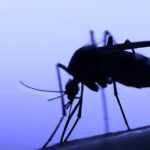
Every year, tens of thousands die of malaria or related issues. While attempts to eradicate the disease often focus on killing mosquitoes — the carrier of the disease — Yale researchers have recently made strides in finding a malaria vaccine, focusing on protecting against the parasite that causes malaria.
A study focusing on malaria vaccination appeared on April 11 in the journal Cell Host & Microbe, co-authored by 18 scientists, 12 of whom work at the Yale School of Medicine. For their vaccine, the researchers immunized mice with AgTRIO, a protein found in mosquito saliva. The researchers found that the vaccine partially protected the mice from malaria infection by the plasmodium parasite.
Marianna Freudzon MED ’14, one of the Yale co-authors, explained that AgTRIO’s function is still not fully known.
“It is a type of enzyme found in fruit flies, and it is supposed to have an enzymatic role in that organism,” Freudzon said. “And it’s not really known yet, the full effect of this component of the saliva in anopheles mosquitoes, first of all in the mosquito itself, and second of all, we’re just finding out that it’s having an effect on the transmission of malaria.”
One of the study’s important findings was that AgTRIO immunization slows down the movement of sporozoites, one of the three stages of the malaria parasite’s life cycle. Using this observation as a jumping-off point, the researchers next plan to study the mechanism by which some of the mice they tested became immune to malaria infection.
“We will be conducting investigations into the mechanisms by which mosquito salivary proteins influence plasmodium infection,” said Tolulope Agunbiade, one of the two leading authors and a postdoctoral fellow at the School of Medicine.
Malaria derives from the plasmodium parasite, which manifests itself in mosquitoes. When an infected mosquito bites a vertebrate, the mosquito releases sporozoites — the first stage in the plasmodium life cycle. Some of these sporozoites are injected into blood vessels, where the sporozoites reach hepatocytes, a type of liver cell. There, they fission into merozoites, the stage at which the parasite reproduces, said co-author Srdan Dragovic, an associate research scientists at the School of Medicine.
“Those [sporozoites] that succeed in making it to the blood vessel will go to the liver, hide inside the hepatocyte and then multiply a lot, into 10,000 merozoites,” Dragovic said.
Once an uninfected mosquito bites an infected human, the mosquito will become infected, bite other humans and perpetuate the disease.
Agunbiade emphasized the role of sporozoites in the perpetuation of malaria.
“Sporozoites are an important life stage in the malaria transmission cycle between the mosquito vector and the vertebrate host,” Agunbiade said. “They are the infectious stage of the plasmodium parasite. They are injected alongside saliva by the mosquito into the host during a blood meal.”
The research behind the paper began in 2010. Dragovic, who works in the School of Medicine, said he hopes the research will be used to produce a malaria vaccine.
“One definite aspect would be to investigate whether it could serve as a vaccine, either alone or with the RTS,S vaccine,” he said. “That would be really exciting for us if perhaps they could provide together better protection.”
Known by the name Mosquirix, RTS,S protects only around 31 percent of newborns for just a year at a time. This is particularly problematic, as newborns in central Africa, the Amazon and parts of India are most prone to the disease because of their weak immune systems, Dragovic said.
Freudzon said that one of the difficulties medical professionals have found is that malaria is becoming resistant to many forms of treatment. She added that the lab’s potential vaccine has a different target than RTS,S.
“That vaccine is looking at targeting the parasite itself,” Freudzon said. “What we’re looking to do is create a vaccine against the saliva portion of the mosquito and see whether or not that can give augmented protective capacity.”
According to the World Health Organization, there were an estimated 212 million cases of malaria and 429,000 malaria-related deaths in 2015. Children, pregnant women and nonimmune travelers from malaria-free areas are most at risk of contracting the disease.
Nick Tabio | nick.tabio@yale.edu








